View basket (0 items $0.00)
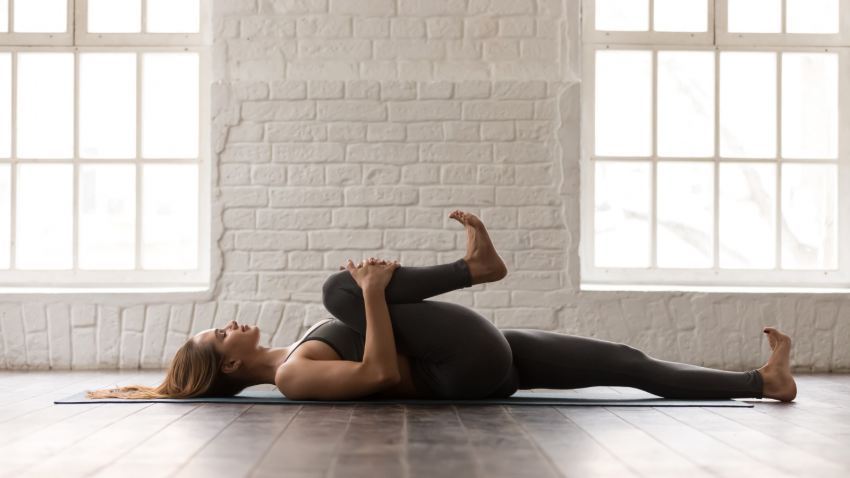
4 Yoga Poses for Low Back Health
While learning to practice yoga at home is challenging, especially with all the other tasks and duties vying for our attention. Still, regular practice does offer the best long-term benefits. A 2012 study of more than 1,000 yoga students demonstrated that the frequency of home practice predicted favorable health attributes, such as levels of mindfulness, subjective wellbeing, body-mass index (BMI), and improved eating habits and sleep.
In this blog, I am offering you four simple yoga poses you could do every day to wake up and condition both your connective tissues and muscles to reduce your incidence of back pain.
Life happens. And the lower back tends to take the brunt of overwork and minimal attention until back pain gets loud enough to cause us to slow down. It is possible to keep your back pain-free with a few yoga moves. In a short 15-minute practice, you can help your back perform its best throughout your day. While this is not an extensive list of poses for total lower back strength and balance, these basics repeated often will serve you well.
4 Yoga Poses to Reduce Lower Back Pain
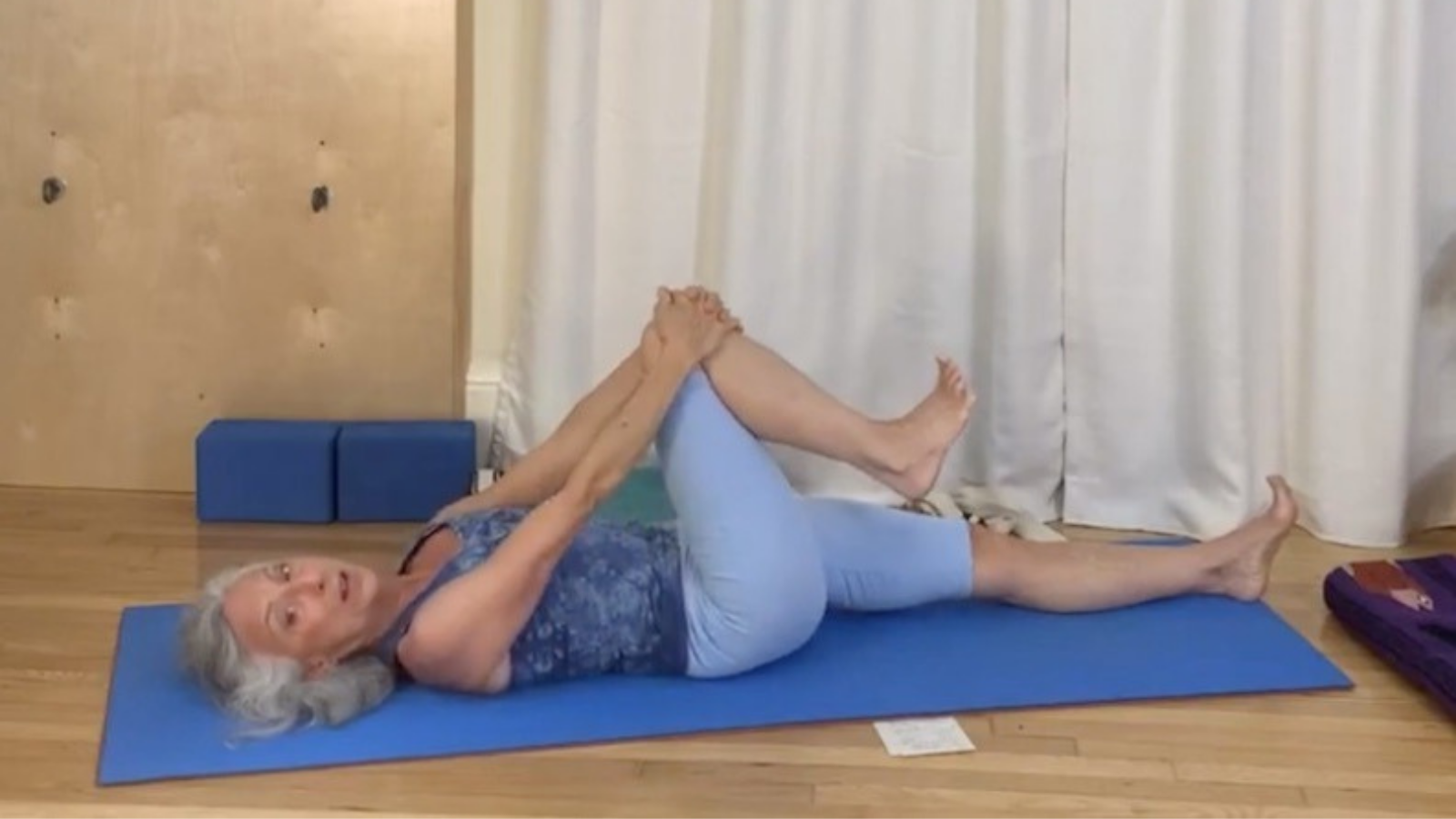
1. Alternate Knee-to-Chest with Resistance (Apanasana Variation)
This is a variation of Wind Release Pose (Apanasana) to help you make contact with the deep abdominal muscle known as the transverse abdominus. For many students, this is the most challenging muscle to connect with and tone for low back stability. Not only does the stretch warm up the hip joints, but when done with resistance and sound, it is an effective aid to help you access and tone that muscle. Make this sound, “psssst,” on the exhalation to exaggerate the dropping of the bottom of the belly toward the floor, creating contraction of the transverse abdominis.
Practice Tips:
-
Make your pelvic clock balanced on the floor, i.e., discover you can balance on your middle sacrum.
-
On an exhalation, make the sound “psssst” and drop the lower belly toward the floor in a way that allows the sacrum to be stable in its position.
-
Press the bent knee away from your chest until your arms are straight. Maintain mild resistance to keep the bent knee and sacrum steady as you swing the straight leg up and down.
2. Revolved Belly Pose (Jathara Parivrtanasana)
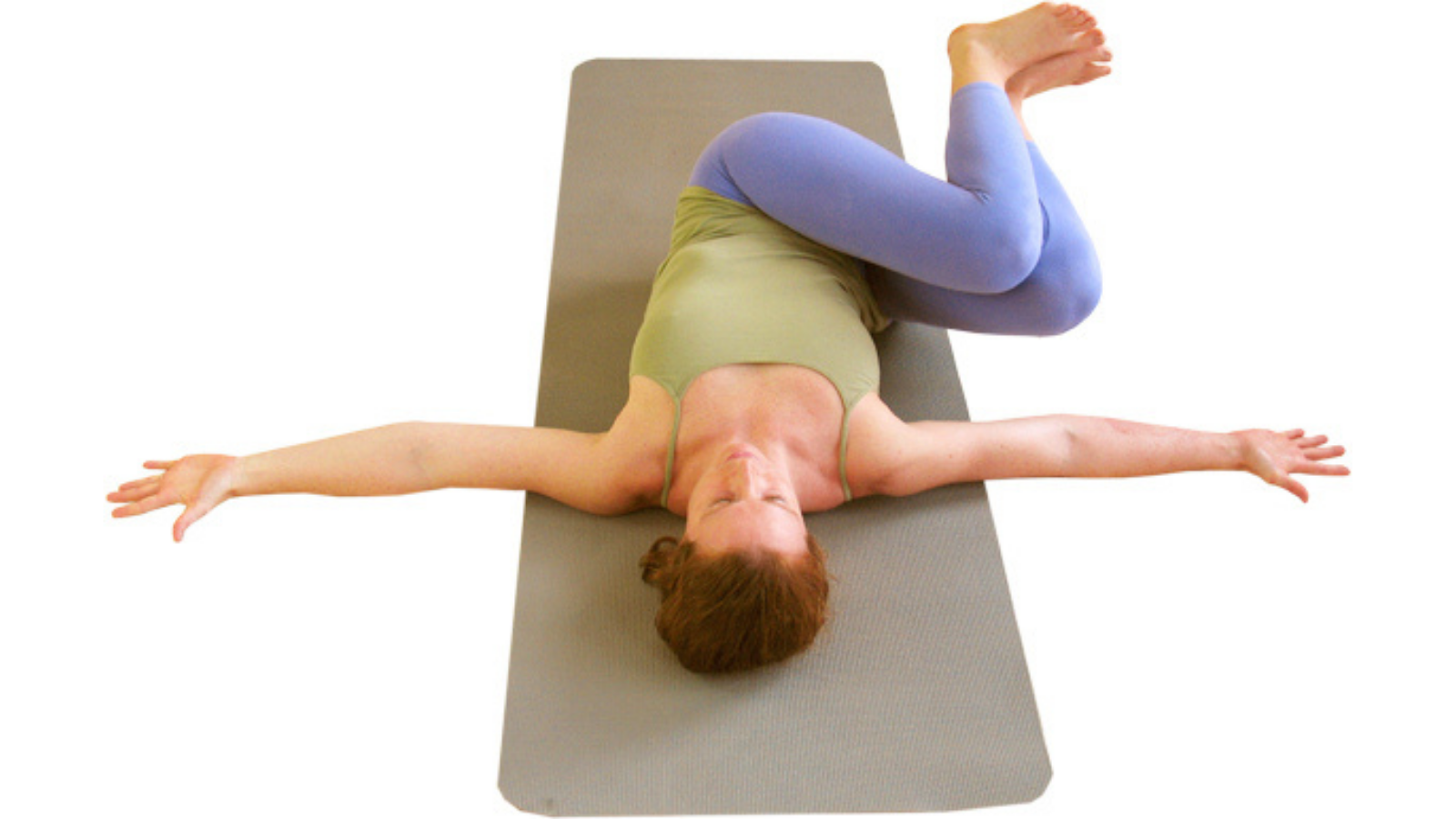
While twisting poses are often contraindicated for lower back problems, this supine twist will help relieve tension in the spine safely when the abdominal muscles are fully engaged. Therefore, keep your knees close to your chest and begin by taking the knees halfway to the right or less. This pose helps release tension through all the small muscles and joints of the spine.
Practice Tips:
-
Turn your belly and lower ribs opposite to the knees. Small movements to each side can work as well as taking the knees closer to the floor.
-
Actively use your arms to keep both your shoulders on the floor and counterbalance the weight of the legs.
-
Begin slowly by turning your head in the same direction as the knees for three rounds to soften your neck. Then repeat three rounds turning your head opposite to your knees.
-
Caution: Please do not take your knees all the way to the floor.
3. Traction Twist (Duryodhanasana)
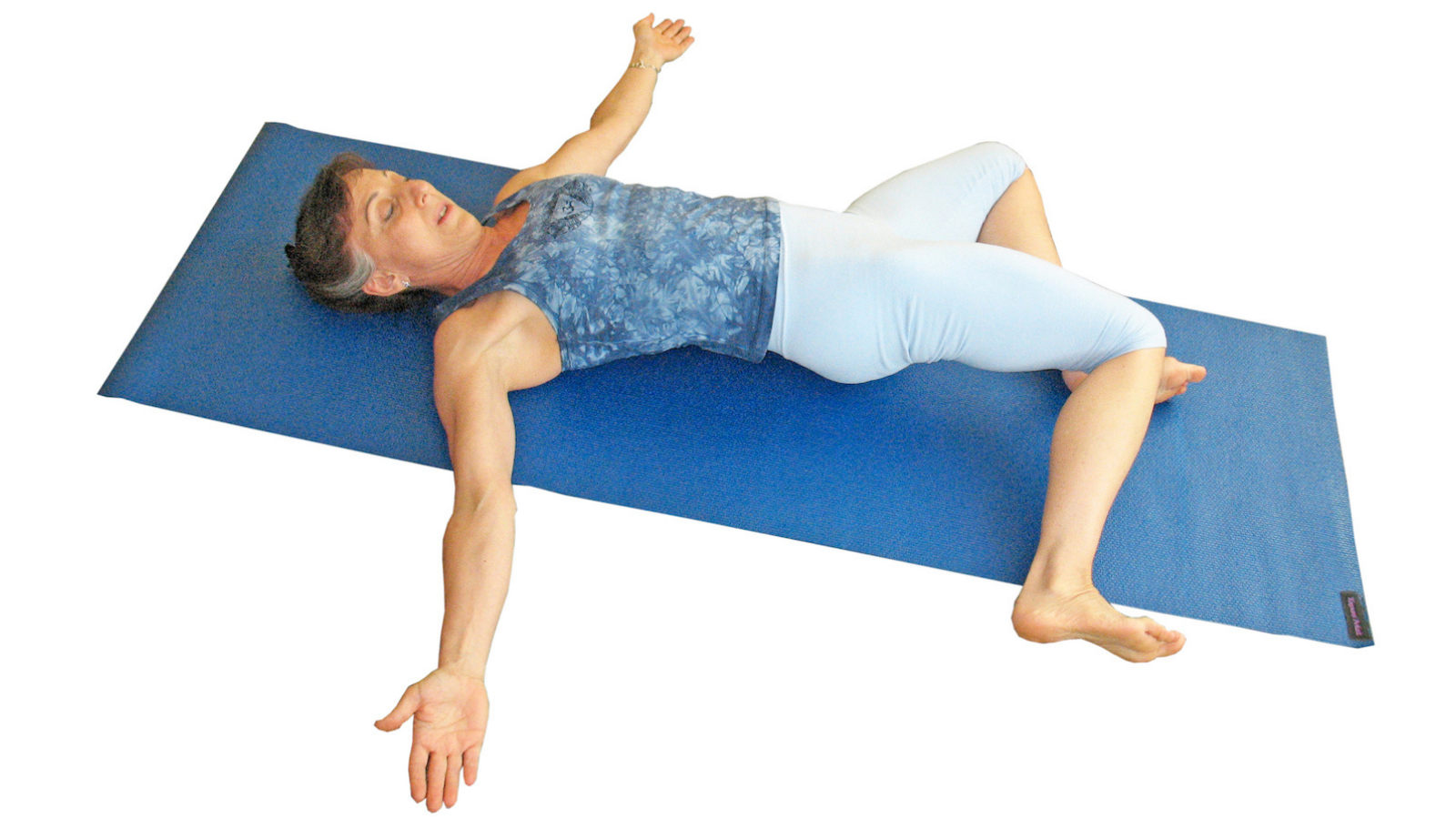
Extend, lengthen, and release your hip flexors (the iliopsoas and quadriceps muscles). When we open the front line of the body, we can stand more upright, which reduces low back stress. This is an excellent pose to use for lower back first aid any time of day.
Practice Tips:
-
Practice the position as shown in the photo.
-
Curl your tail toward your pubic bone to narrow the pelvic floor.
-
Scoop the bottom of your belly in and up.
-
Extend the top knee away from the front hip or into the block.
-
Draw your bottom right ribs back toward the floor. The hip will stay somewhat elevated.
-
Caution: If you have any pain in your inner knee, place a block under the knee for support. Press the knee on the block as you curl your tail to release tightness in the hip and ease the knee discomfort.
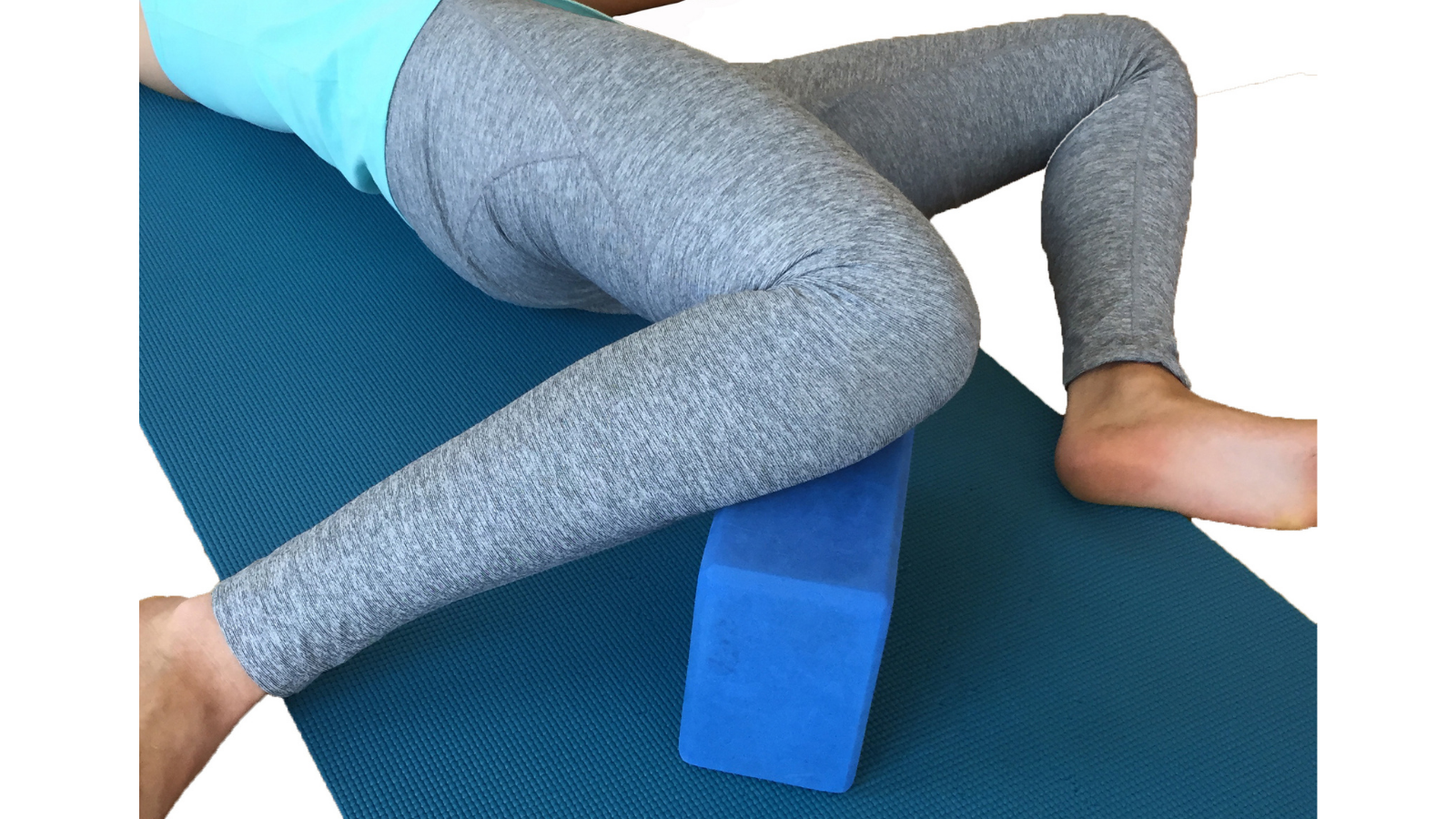
4. Extended West Stretch at the Wall. (Parsvottanasana)
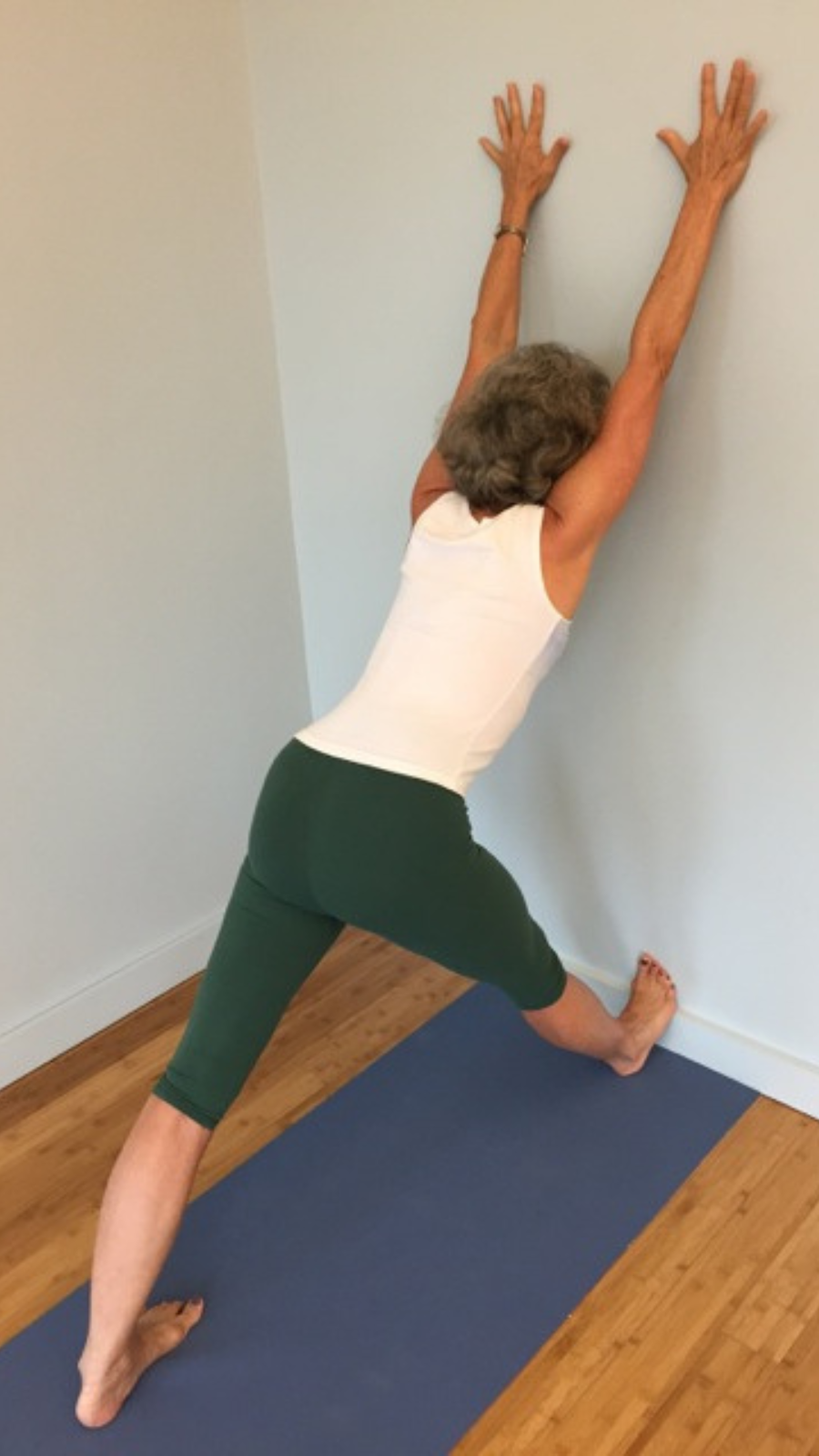 The common actions of bending, lifting, and twisting all have a tendency to compress and shorten the spine. This efficient pose offers three benefits:
The common actions of bending, lifting, and twisting all have a tendency to compress and shorten the spine. This efficient pose offers three benefits:
-
A stretch for the hamstring and latissimus dorsi muscles
-
Decompression for the front of the spine and intervertebral discs
-
Toning for the posterior spinal muscles
Practice Tips:
-
Place your toes up on the wall at a 45-degree angle.
-
Take a giant step back with the opposite leg. Keep your heels on opposite sides of the centerline. Avoid crossing the midline when you place your back foot.
-
Face your hips toward the wall and walk your hands up until your spine is fully extended.
-
Wrap your outer arm toward the wall and draw your anterior bottom ribs back.
-
Press your top thighs and sit bones back away from the wall.
-
Caution: Be sure to extend your spine fully. Reach back with one hand and feel your lumbar spine. If you feel your spinous process poking up, move your hands higher up the wall and stretch your sit bones further back until you feel a “valley” there instead.
May your life be blessed with yoga.
Yoga for Healthy Aging and Healthy Back: Key Elements & Practice for Back Pain Relief from YogaUOnline and Lillah Schwartz.
Reprinted with permission from Lillah Schwartz/Yogawithlillah.com

 Lillah Schwartz, C-IAYT Certified Yoga Therapist, is an Asheville-based yoga teacher, teacher trainer, and author with more than 35 years of experience. A certified yoga therapist, her specialties include her book, Healing Our Backs with Yoga: An Essential Guide to Back Pain Relief, which came out in 2016. Lillah also has three therapeutic yoga DVDs for back pain relief.
Lillah Schwartz, C-IAYT Certified Yoga Therapist, is an Asheville-based yoga teacher, teacher trainer, and author with more than 35 years of experience. A certified yoga therapist, her specialties include her book, Healing Our Backs with Yoga: An Essential Guide to Back Pain Relief, which came out in 2016. Lillah also has three therapeutic yoga DVDs for back pain relief.
Featured Courses









